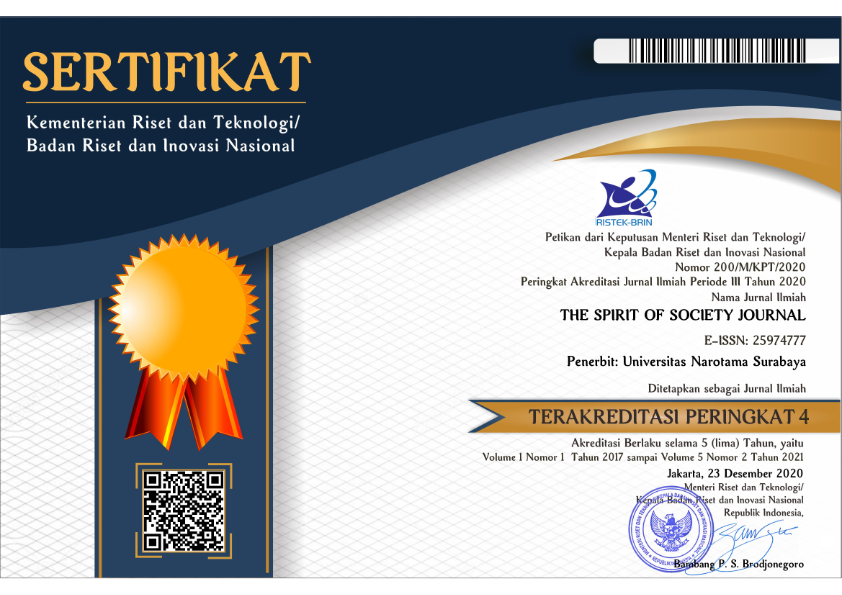STRONG TEST PRESSURE CONCRETE USE OF ASBEST WASTE
Abstract
Concrete is a significant and most dominant material used in building structures. Concrete consists of a mixture of cement, aggregate, water, and added ingredients. Concrete said material has an essential role in making concrete because it can change the real properties to suit the needs. Li, asbestos is a concrete-added material that can reduce the use of cement and produce concrete with absolute consistency. The purpose of this study was to determine how the effect of adding asbestos waste to cement. The method used is an experimental method based on previous research. The specimen used was cylindrical with a diameter of 15 cm and a height of 30 cm. The percentage variation of asbestos waste addition is 0%, 50%, and 100% of the weight of cement used. Typical concrete test results obtained an average value of 22.08 MPa, a 50% percentage produces an average compressive strength of 21.32 MPa, and a portion of 100% provides a compressive strength of 22.93 MPa. Then the results of the then actual strength test have increased in the percentage of asbestos waste 100%.
Downloads
References
Breu, F., Guggenbichler, S., & Wollmann, J. (2008). Ultra-High Strength Concrete Mixtures Using Local Materials. Vasa, 575, 1–13. https://doi.org/10.1017/CBO9781107415324.004
Cahyo, Y. (2020). The Effect of Stirring Time and Concrete Compaction on K-200 Concrete Press Strength. https://doi.org/10.1088/1742-6596/1569/4/042033
Candra, A. I. (2020). Correlation of Concrete Strength and Concrete Age K-300 Using Sikacim ® Concrete Additive and Master Ease 5010 Correlation of Concrete Strength and Concrete Age K-300 Using Sikacim ® Concrete Additive and Master Ease 5010. https://doi.org/10.1088/1742-6596/1569/4/042032
Chai Lee, J., Shafigh, P., & Kim Lee, S. (2019). High Strength Concrete Incorporating Oil-Palm-Boiler Clinker as Coarse Lightweight Aggregate. IOP Conference Series: Materials Science and Engineering, 601(1). https://doi.org/10.1088/1757-899X/601/1/012017
Chan, Y. W., & Chu, S. H. (2004). Effect of silica fume on steel fiber bond characteristics in reactive powder concrete. Cement and Concrete Research, 34(7), 1167–1172. https://doi.org/10.1016/j.cemconres.2003.12.023
Dachlan, A. T., & Setiadji, R. (2015). ( Usage of Merapi Sand for High-Grade Concrete ). 16–31.
Gowdham, K., Sumathi, A., & Saravana Raja Mohan, K. (2017). Study on the strength characteristics of High strength concrete with Micro steel fibers. IOP Conference Series: Earth and Environmental Science, 80(1). https://doi.org/10.1088/1755-1315/80/1/012010
Kasim, N., Sulaiman, M. R., & Taib, K. A. (2019). Utilization of ultra - High performance concrete for bridge construction - A case study of Kg. Seberang Manong to Pekan Manong bridge. IOP Conference Series: Materials Science and Engineering, 512(1). https://doi.org/10.1088/1757-899X/512/1/012036
Kusumawardaningsih, Y., Fehling, E., Ismail, M., & Aboubakr, A. A. M. (2015). Tensile strength behavior of UHPC and UHPFRC. Procedia Engineering, 125, 1081–1086. https://doi.org/10.1016/j.proeng.2015.11.166
Larsen, I. L., Granseth Aasbakken, I., O’Born, R., Vertes, K., & Thorstensen, R. T. (2017). Determining the Environmental Benefits of Ultra High Performance Concrete as a Bridge Construction Material. IOP Conference Series: Materials Science and Engineering, 245(5). https://doi.org/10.1088/1757-899X/245/5/052096
Maghfouri, M., Shafigh, P., Binti Ibrahim, Z., & Alimohammadi, V. (2017). Quality control of lightweight aggregate concrete based on initial and final water absorption tests. IOP Conference Series: Materials Science and Engineering, 210(1). https://doi.org/10.1088/1757-899X/210/1/012022
Malier. (1992). Pembuatan Ultra High Strength Concrete Dengan Material Lokal. 1–8.
Pujianto, A. (2011). Beton Mutu Tinggi dengan Admixture Superplastisizer dan Aditif Silicafume. Jurnal Ilmiah Semesta Teknika, 14(2), 177–185.
Qasim, O. A. (2018). Experimental investigation on autogenous shrinkage of high and ultra-high strength concrete. IOP Conference Series: Materials Science and Engineering, 454(1). https://doi.org/10.1088/1757-899X/454/1/012067
Ratnawulan, R., Fauzi, A., & Hayati, A. E. S. (2018). Characterization of Silica Sand Due to the Influence of Calcination Temperature. IOP Conference Series: Materials Science and Engineering, 335(1). https://doi.org/10.1088/1757-899X/335/1/012008
Ridwan, A., Candra, A. I., & Gardjito, E. (n.d.). Experimental Study Additional Brantas Sands Of Clay Density. 6–11.
S Winarto. (2020). ANALYSIS CAUSES CONCRETE DAMAGE AND PREVENTION. https://doi.org/10.1088/1742-6596/1569/4/042031
Sathyan, D., Anand, K. B., Mini, K. M., & Aparna, S. (2018). Optimization of superplasticizer in portland pozzolana cement mortar and concrete. IOP Conference Series: Materials Science and Engineering, 310(1). https://doi.org/10.1088/1757-899X/310/1/012036
Zhang, X., & Zhang, H. (2019). Experimental Research on Ultra-High Performance Concrete (UHPC). IOP Conference Series: Materials Science and Engineering, 562(1). https://doi.org/10.1088/1757-899X/562/1/012045
Copyright (c) 2020 THE SPIRIT OF SOCIETY JOURNAL

This work is licensed under a Creative Commons Attribution-ShareAlike 4.0 International License.












